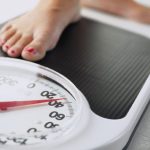(HealthDay News) — Disagreements with a friend or partner are normal, says the National Voice of Domestic Violence. But when a relationship is not built on respect and equal partnership, an unhealthy relationship may develop. The organization mentions these characteristics of a healthy argument: A disagreement about chores, spending habits, raising children or difficult family or friends. Insensitive and hurtful comments are said occasionally, not consistently. Partners can admit when they are wrong, take responsibility and compromise. Tension is usually short-lived. Goals and decisions can be questioned, but general support isn’t withheld. Final decisions on big life changes are reached by mutual compromise.
A little about: Weekly Gravy
All Sauce from Weekly Gravy:
Is Online Fitness Training Right for You?

You say that you can’t get to the gym or afford to hire your own personal trainer, but you want a routine made just for you. It might not be mission impossible after all. Why not consider online fitness training with your computer, smartphone or tablet, and a workout pro on the other end? There are almost as many of these offerings as there are exercises themselves. Some websites offer live action, two-way trainer-led workouts with the instructor watching you and able to give corrections. Others offer customized routines that you follow from a video library or with an app. Many will track your progress and update your routine as needed. Some provide monthly consultation phone calls or video chats or feedback when you send in a videotaped workout, and answer your questions via text. As you investigate the choices, check that the trainer is certified by an established fitness organization. Leading Certifying Fitness Organizations American Council on Exercise National Strength and Conditioning Association American College of Sports Medicine Ask for references and read comments on social media, not just testimonials posted on the website. Beware of unrealistic promises. Compare the costs from different companies so that you know what you’re getting for your money. Online training isn’t right for everyone, especially if you’re out of shape or have medical issues. But even then, it… read on >
A Cool-Season Comfort Food Without Lots of Calories

If you’ve been relegating parsnips to the stock pot (their sweetness enhances both chicken and vegetable broth) or have been skipping over them altogether, you’re missing out on a hearty side-dish choice for fall evenings and winter holidays alike. Think of parsnips as a healthy comfort food, because cooking them brings out their naturally creamy texture but without all the calories of potatoes. They’re a good source of fiber, plus they have the B vitamin folate and vitamin C. And you don’t have to turn on your oven to get all that goodness when you roast them on top of the stove with a sweet maple glaze. Pan-Roasted Parsnips 1 pound parsnips 2 tablespoons olive oil 1/2 teaspoon salt 1/4 teaspoon freshly ground black pepper 2 tablespoons maple syrup 2 tablespoons apple cider vinegar 2 tablespoons chopped parsley or 1 teaspoon fresh thyme leaves Peel the parsnips and cut into 2-inch long chunks. Heat a large skillet over medium heat. Add the oil and the parsnips. Sprinkle with salt and pepper and toss with tongs to coat. Cover and cook for 6 to 7 minutes over low heat, turning occasionally, until the parsnips start to brown and soften. Carefully add 2 tablespoons of water and cover to steam through, about 2 more minutes. Check for doneness. If not tender enough, cook for 2 more minutes.… read on >
Have Heart Disease? Exercise Will Help at Any Age

If you are older and you have heart disease, you might think you should take it easy. But new research suggests the opposite is true. Exercise is especially beneficial for patients who have a physical impairment, the study authors found. “Aging is associated with several factors such as increased inflammation or oxidative stress that predispose people to cardiovascular diseases. As a result, elderly patients are usually less fit than their younger counterparts, and deconditioning is accelerated once cardiovascular disease is established,” said lead investigator Gaelle Deley. She is with Faculty of Sports Sciences at the University of Burgundy Franche-Comte in Dijon, France. For the study, the researchers analyzed the results of 733 patients who underwent 25 sessions of a cardiac rehabilitation program from January 2015 to September 2017. The group was divided into three subgroups by age: under 65, between 65 and 80, and 80 and older. “We found a few weeks of exercise training not only significantly improved exercise capacity but also decreased anxiety and depression. Patients with the greatest physical impairments at baseline benefited the most from exercise,” Deley said. The report was published Oct. 8 in the Canadian Journal of Cardiology. “Another interesting result was that patients younger than 65 who were very anxious before rehabilitation benefited the most from exercise training,” Deley said in a journal news release. “A similar result… read on >
Mummy’s Curse: Heart Disease Is an Ancient Scourge

Scientists are taking the wrappings off an age-old malady. Clogged arteries are a heart problem that’s dogged humanity for millennia, finds a new imaging study of mummies. Mummified arterial tissue shows evidence of cholesterol plaque buildup in people who lived anywhere from 2000 BC to 1000 AD, said lead researcher Dr. Mohammad Madjid. These weren’t just bigwigs eating rich diets, either. Four of the five mummies included in the study hail from South America, where average folk were mummified, said Madjid. He’s an assistant professor of cardiovascular medicine with the McGovern Medical School at the University of Texas Health Science Center, in Houston. “These were ordinary people,” Madjid said of all five mummies. “That tells me that the development of atherosclerosis might combine the effects of nature versus nurture,” with both genetics and risk factors playing a role in the development of clogged arteries. Blocked arteries can lead to heart attack. Studies of mummies aren’t unusual, but researchers usually use CT scans to create meticulous images of blood vessels and organs. The downside for heart researchers is that CT scans can only detect accumulated calcium in the arteries, not actual cholesterol plaques. These plaques tend to calcify, so calcium has been used as a marker for clogged arteries. Madjid and his colleagues said they’re the first to study mummy samples using near-infrared spectroscopy, an imaging… read on >
Your Furry Best Friend Might Extend Your Life

Don’t get too mad at that new puppy who piddled on the rug or chewed up your favorite slippers. In the long run, that scamp is going to help you live a longer and healthier life. A pair of new reports found that dog owners have a lower risk of early death than people without canine companionship, particularly when it comes to dying from a heart attack or stroke. Dog ownership decreases a person’s overall risk of premature death by 24%, according to researchers who conducted a review of the available medical evidence. The benefit is most pronounced in people with existing heart problems. Dog owners had a 65% reduced risk of death following a heart attack and a 31% reduced risk of death from heart disease, the researchers said. “People who had a heart attack prior to getting a dog had even more reduction in mortality,” said lead author Dr. Caroline Kramer, an assistant professor of medicine at the University of Toronto, Canada. That analysis was backed up by a separate Swedish study, which found that heart attack and stroke victims who own dogs have a lower risk of dying, particularly if they live alone. Owning a dog reduced a heart attack patient’s risk of death by 33% if they live alone, and 15% if they live with a partner or child, according to… read on >
Health Tip: What to Expect When Your Eyes Are Dilated
(HealthDay News) — When dilating your eyes, your doctor will put a small amount of eye drop solution into each of your eyes, says the American Academy of Ophthalmology. Within 30 minutes, your pupils should fully open. Your vision will be blurry, and focusing on close objects will be difficult. And you will be extra sensitive to bright light. The effects of dilating eye drops last up to several hours, so the academy recommends having someone drive you home after your appointment.
Flu Season Is Coming: Here’s How to Protect Yourself

If you don’t want to be one of the 40 million Americans who get the flu each year, it’s time to roll up your sleeve. Everyone 6 months of age or older should have a flu shot by late October, before flu season begins, the U.S. Centers for Disease Control and Prevention recommends. Flu puts hundreds of thousands in the hospital each year and last year it claimed up to 61,000 lives, the CDC estimated. Even once the flu season is in full swing, it’s not too late to get protected, experts from Rutgers Medical School said. The vaccine covers both influenza A and B strains, and this year’s shot has been tweaked to account for changes in the virus. “Besides protecting you from common strains of the flu, the vaccine will lessen the severity of symptoms if you contract a strain that was not included,” said Dr. Tanaya Bhowmick, an infectious diseases specialist. “Having the vaccination will stop the virus from infecting others,” especially vulnerable populations such as the elderly, children and those who have an impaired immune system, she explained in a news release from Rutgers Health. Bhowmick added that a nasal spray vaccine, FluMist, can be given to people between the ages of 2 and 49, and it’s as effective as a needle. Her colleague, Dr. David Cennimo, an assistant professor of… read on >
Sinus Infections: What You Need to Know

Along with the flu, this is the time of year for sinus infections with their make-you-miserable stuffy, runny noses and blocked ears. Most sinus infections are caused by viruses, but bacteria can also be to blame, according to Dr. Jessica Grayson, an assistant professor of otolaryngology at the University of Alabama at Birmingham. “When people say they have sinus pressure, they may mean nasal congestion,” Grayson said in a university news release. “Bilateral congestion could mean a person has a viral infection or an allergic reaction. Viral infections don’t pick and choose a side.” If your sinus pressure is isolated, you might have a bacterial infection, and that means you need to see a doctor and probably need an antibiotic, she said. Taking too many, though, can have negative effects on the immune system. “With a virus,” Grayson added, “you just have to let it run its course.” But a nasal decongestant like Afrin can help, she said. Grayson recommends using it at night and for no more than three or four days in a row. Use it longer and you run the risk of getting rebound congestion. “This starts a vicious cycle of becoming addicted to using the product,” she said. Using saline irrigation or a neti pot can also help by washing out the nasal passages, Grayson said. For the first few days… read on >
Just a Little Weight Loss Can Put Diabetes Into Remission

British researchers have good news for people with type 2 diabetes — you don’t need to lose a ton of weight to make a difference in your health. In fact, they found that losing just 10% of your body weight during the first five years you have the disease can lead to remission of type 2 diabetes. That weight loss would be 18 pounds for someone who weighs 180 pounds. It doesn’t matter what diet helps you lose the weight. And it doesn’t matter how slow or how quickly those pounds come off, the investigators found. “Even small amounts of weight loss can help you achieve remission. Extreme dieting and exercising are not necessary,” said study author Dr. Hajira Dambha-Miller, a general practice physician and clinical lecturer at the University of Cambridge School of Clinical Medicine, in the United Kingdom. “Type 2 diabetes should no longer be seen as a lifelong disease,” she added. The disease can essentially be cured if you lose weight and keep it off, according to Dambha-Miller. The researchers said that type 2 diabetes affects 400 million people around the world. It’s typically considered a chronic, progressive disease. But significant weight loss through extreme dieting (less than 700 calories a day) can bring about remission in almost 90% of people with type 2 diabetes, the study authors noted. Weight-loss surgery also… read on >









